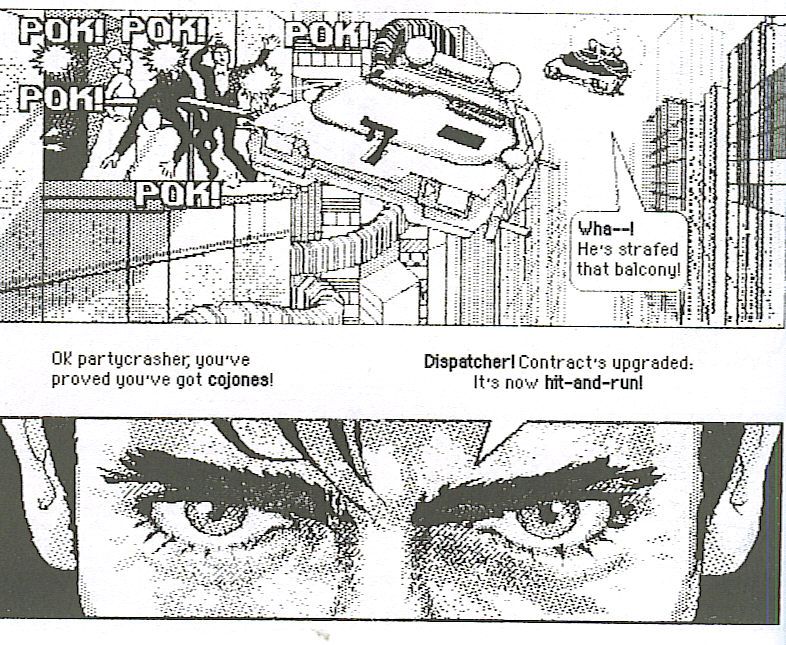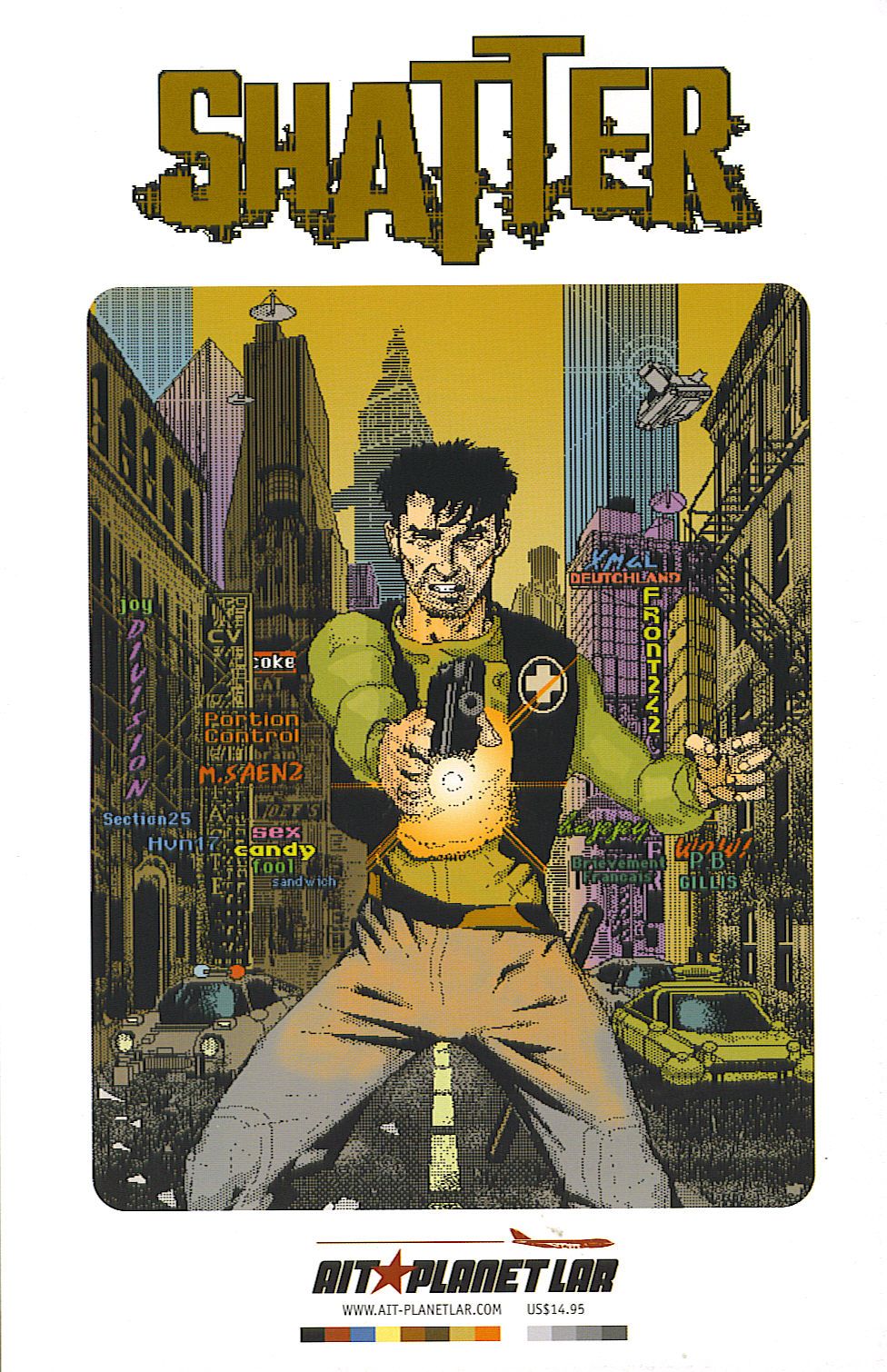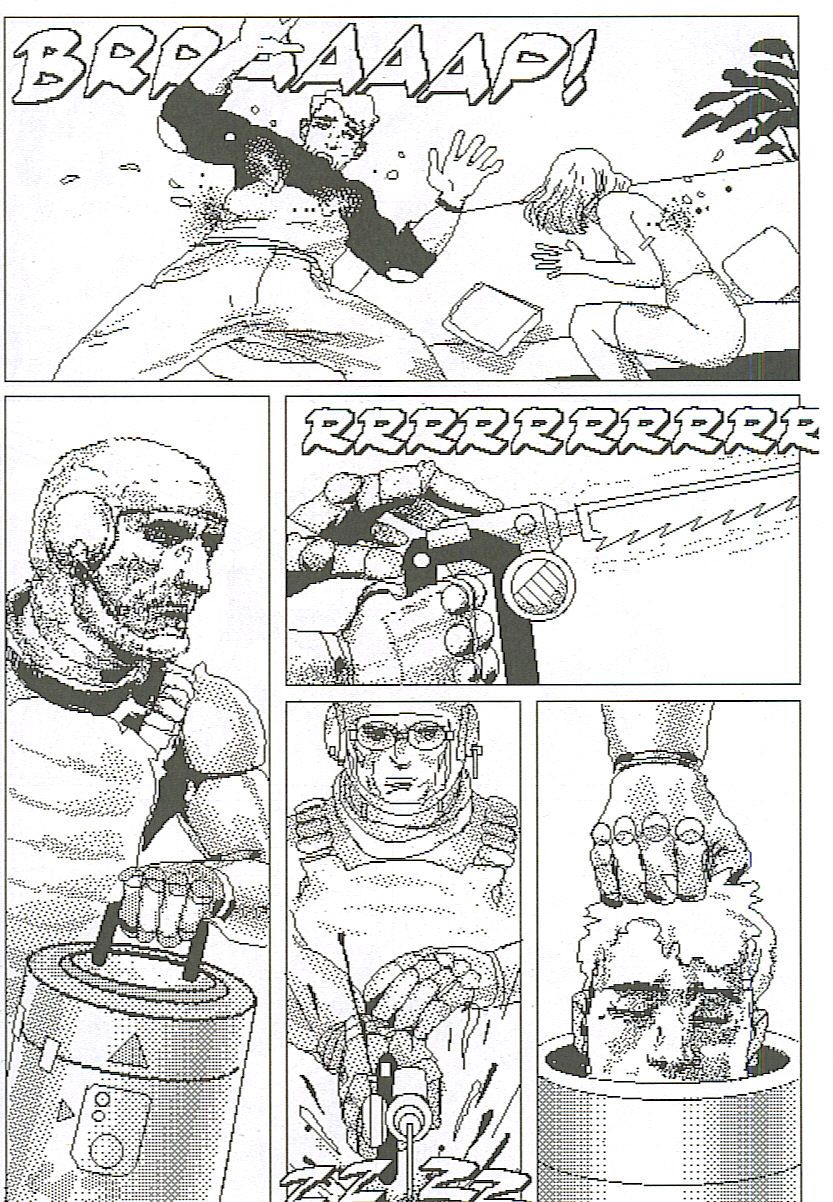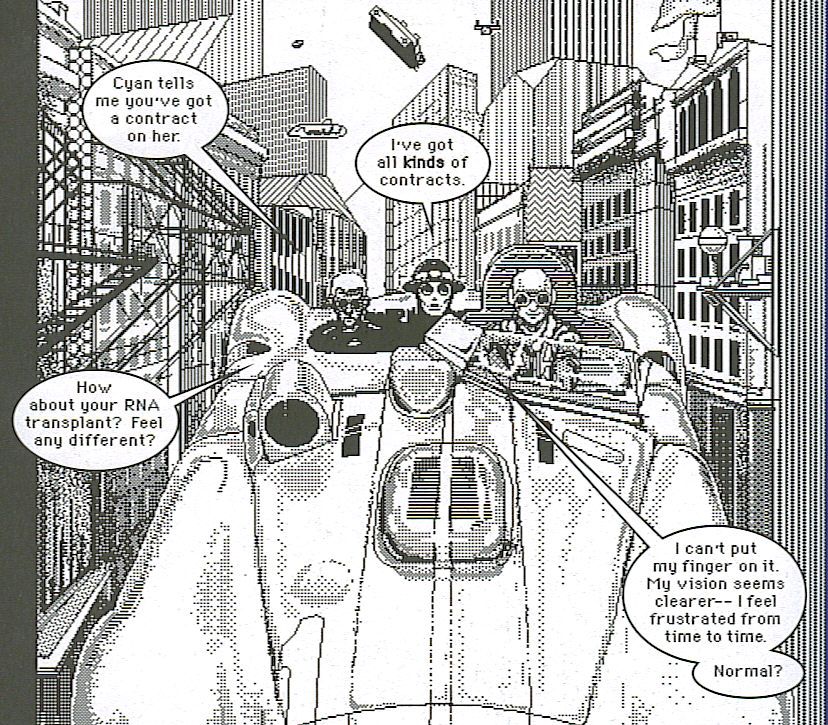Larry Young and his krewe were kind enough to send me a copy of Shatter a few weeks back, on the same day I bought it at my local comics shoppe (which means I have two - and you know what that means!), and I thank them for it. I had been reading all sorts of good things about it, so when it was solicited, I had to order it. Come on - 1980s Macintosh art? Sign me up!
But that's the problem with Shatter. It's visionary. And it points out the problems with reviewing visionary works. How do we review it? Should we review it for its influence and its foresight? Or should we say screw all that and simply treat it as another work of fiction, which would downplay its revolutionary aspect. Ah! We can do both! And that, again, is where we run into a problem.
The problem is that, as a story, Shatter is just okay. The idea is perfectly early-1980s cyberpunk: Sadr al-Din Morales, aka Shatter, is a cop. In the future in Daley City, cops are independent contractors, and Morales is just another cop trying to make a living. He takes a job tracking down a multiple murderer who killed 15 board members of Simon Shuster Jovanovich, but when he finds her, she tells him that the company is using human RNA to transfer the skill sets of people to others. Through a series of bad events, Morales finds himself withan underground movement dedicated to stopping this practice. He also finds out that he has a"golden brain" in that when he is injected with RNA, he doesn't lose the talent, like everyone else does eventually. That makes his brain valuable becauseeveryone wants to find out how to make the transfer permanent.Morales gets in deeper with the group, someone betrays them, people get shot, and it ends rather ambiguously. I don't want to give too much away, but I don't really have to, because this is a difficult book to really discuss on itsown merits.
As a book, it's not that good. There is far too much disjointed dialogue, with non sequiturs abounding, and although I don't mind ambiguous endings, this ending is far too ambiguous. The characters aren't really sketched out that well, so when the revolutionaries reveal themselves to be just as money-hungry as the corporation, it's not that big a shock or surprise, and it doesn't really have the resonance that I think Mike Saenz (who did the art and most of the writing) is going for. The idea of RNA transfer is intriguing, but not developed as much as it could have been, so the ethics of it are glossed over with only a few mentions, and the process is never really explored, especially with regard to Morales, who is able to keep the traits he receives. One thing it does nicely is show us several ideas that are common currency these days - genetic research, corporate ownership ofsecurity forces and body modification, to name a few. Other than that, it's as if Saenz took so long with the art that the story and dialogue were afterthoughts. In that way, Shatter is visionary for a reason we don't want it to be: it foreshadowed the early Image books!
As for the art, well, it's computer-generated art from 1984. Therefore it's stiff and unlifelike, but at the same time, it has a mad energy that comes from discovering what you can do with this piece of equipment beyond what anyone thought before. The art is certainly the star of the book, which, unfortunately, isn't saying much, and it's visually very interesting to look at each panel and marvel at the detail that Saenz was able to get into the work on what we would consider now to be a prehistoric machine. I certainly don't know much (if anything) about creating work on a computer (I'm lucky I know how to type), but I imagine this took quite a while, and even though it's not perfect, the fact that it's not perfect lends the book a nice noir feel even though it takes place at least fifty years from now (it's long enough after 2034 that Coca-Cola, last made in that year, is a rare commodity). If the art is occasionally clunky, it's nowhere near as clunky as the dialogue, and it's certainly a pleasure to examine as you would a relic from an ancient age.
And that's where we come back to the problem with Shatter. I can't recommend it on its merits alone. It's too poorly written, and the art, although interesting, is nothing special by today's standards. And even though we can still appreciate the quirkiness of Silver Age art, this doesn't even have those weird tics of the human artist that make those older comics fascinating. Despite its roughness, it's still antiseptic. So why would you buy Shatter? Well, for the same reason you would appreciate Final Fantasy: The Spirits Within - it's not that good a movie, but the idea is fascinating. We can watch that short film that Edison made of two men dancing and be bored out of our minds, but that's not the point - the point is that it was a whole new medium, and it's fascinating to look at. Shatter should be revered for what it is and not whether it does what it supposed to particularly well. This is an artifact from the past that has great influence on how we create and even read comics today. We have become used to seeing computer-generated graphics in comics, and Saenz was the first to see the possibilities of this machine. Even more than comics, this book is influential in the art world in general, and therefore we can look at it and marvel at the time and effort that went into this book and the dedication to the craft that Saenz had. He could have given up, but he knew that this was the future. Shatter is much more interesting to consider in this way, because although it's not horrible, it's not that good as a comic book.
But don't just take my word for it! Lots o' folk around the comics blogaxy have read and reviewed this. Dorian has his say here, and Mattymatt digs it, as does Ash, while Mike Sterling recommends it, and Dave Carter does too, and Johnny Bacardi waxes nostalgic but comes down on the good side of the book. So there are plenty of otheropinions you can sample! And remember - I have two copies! Whatever could that mean?
Anyway, as usual, it's very cool of Larry to send out free copies, because then people talk about it and find out more about it. Wow - good marketing from a comic book company! The mind boggles!




